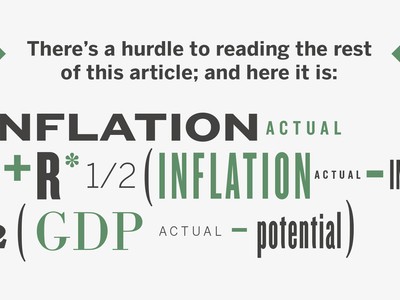X But the difference today is that there is no single issue on which one can focus to try to determine what likely outcomes might arise. Rather, there are a variety of areas where sufficient uncertainty exists to make forecasting even more of a challenge than usual.
Perhaps that is why markets have held up relatively well despite a flow of news that could well have seen investors heading for the hills. I am reminded of the situation that existed in 1974. The defeat of the combined Arab forces in their retaliation against the Six Days War that had taken place only a few years previously resulted in a quadrupling in the price of oil. This took place against a background of a full scale banking crisis which saw many so-called secondary banks go to the wall.
And the political dimension was just as complex, with Prime Minister Edward Heath calling a general election on the basis of who ruled Britain, following the three day week caused by the miners’ strike which threatened to ruin the economy. He lost his majority in Parliament but, unlike Theresa May two years ago, was forced into opposition following a pact between Labour and the Liberals. Later that year Harold Wilson held a second general election and scraped home with a slim majority to usher in a period of high inflation and economic hardship.
The difference between then and now is that markets went into severe decline, resulting in a 70% fall in the then benchmark index – the FT Industrial Ordinary Share Index – though the subsequent recovery was just as dramatic. In those days, though, the options for managing the risk inherent in a portfolio were severely limited. Investing abroad was difficult and costly, so avoiding domestic equity risk was expensive. Alternative investment options barely existed, unless you were seriously wealthy, that is. Even then they were limited.
Moving simply into cash might have mitigated the effects of the severe bear market that ran from mid 1973 to the first trading day of 1975, but you’d have to be smart to get back in as the market recovered very swiftly and inflation had taken off big time, driving the rise in the cost of living up to over 20% and sparking a collapse in bond prices. Moreover, in these pre currency freedom days, moving money abroad was not an option.
Today managing risk is an ongoing part of any portfolio managers’ responsibility. Aside from grading investments according to risk characteristics, the construction of a portfolio can do much to mitigate risk in most likely scenarios. Traditionally this is done through diversification, both by ensuring a single asset class is not over dependent on a single specific investment and by creating a mix of assets that, hopefully, are unlikely to perform in a similar manner if unexpected events disturb the investment equilibrium.
You can even invest in risk. There is an index, popularly known as “The Fear Index”, which measures volatility. The more volatile markets become, the greater degree of perceived risk. Officially called the CBoE Volatility Index, it is better known by its ticker – VIX. This index was a central character in a novel by Richard Harris about a hedge fund manager in Switzerland. It is a good read, but those of a nervous investment disposition should probably give it a miss.
Visiting the website for CBoE you will find VIX promoted as a tool for managing risk, creating diversification and even generating income. Presently standing at around 18, for much of the time it has existed its value has hovered around an average in the mid-teens, though in 2008 it spiked at nearly 33, only dropping marginally the following year and staying relatively high until 2013. It ended last year at an average of 16.7.
You can even invest in risk. There is an index, popularly known as “The Fear Index”, which measures volatility.
But for most of us, managing risk is more about ensuring a proper degree of diversity exists in our portfolios and that we have an appropriate time frame for our investments. Warren Buffett once remarked that time, not timing, is the most important element in equity investing. The shorter the time frame, the greater the degree of risk, so if the money you are investing might be needed in short order, place it in cash or short dated bonds – not equities that require time to deliver to expectations.
As for asset diversification, the choice these days are legion. Property, infrastructure, energy, commodities and other even more esoteric asset classes are available in some measure. Not all will be appropriate for every investor, but it does demonstrate that options exist in ways that were simply not available when I started out in the investment business. So when economic conditions are as difficult to assess as they are at present, you don’t need to dash for cash, which can be just as risky over the longer term.
Perhaps the most important lesson to learn, though, is that conditions constantly change. At the end of 1974, it felt as though the world was coming to an end for investors. After Black Monday in October 1987, I recall the head of research in the major investment house where I worked telling us that he couldn’t understand what was happening. The financial crisis of 2008 caused many to signal the end of capitalism. We survived all these. We’ll get through the current uncertainty too.



